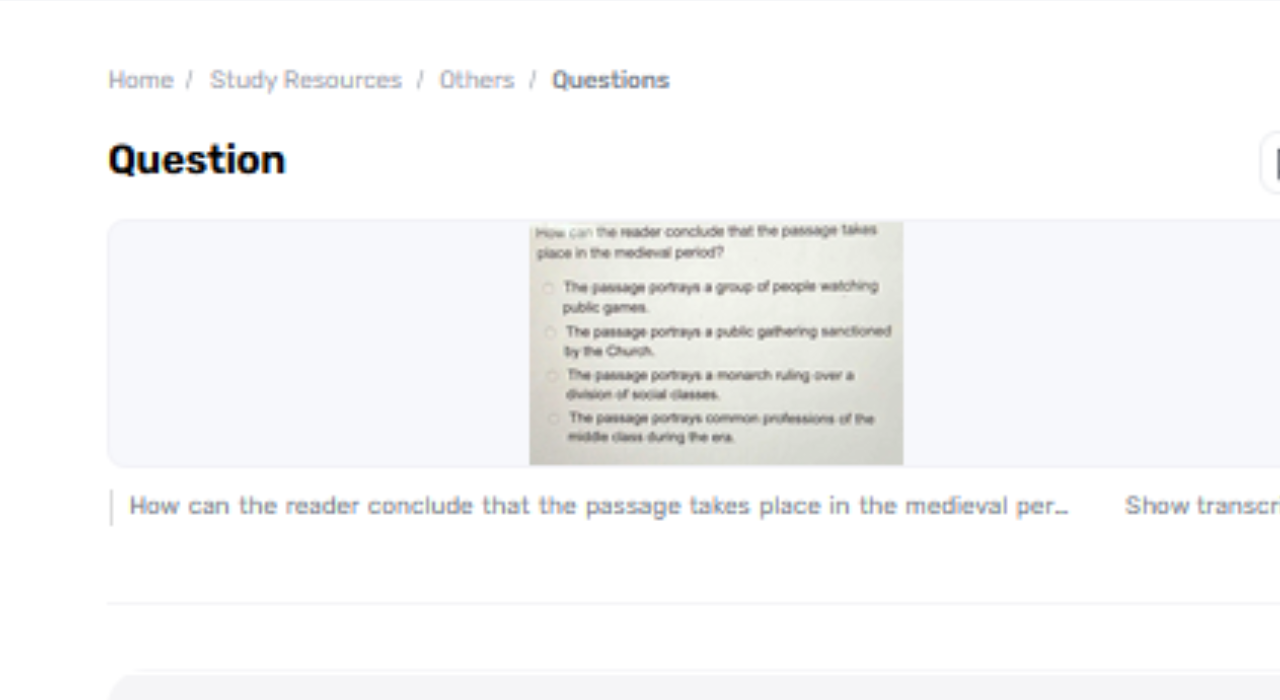Deciding the period in which an entry is set can be significant for understanding its verifiable setting, subjects, and characters. Recognizing how can the reader conclude that the passage takes place in the medieval period? a medieval setting includes recognizing particular components that characterize the medieval period, ordinarily crossing from the 5th to the late 15th century. This paper will investigate how perusers can conclude that a passage is put within the medieval period by looking at different markers such as verifiable setting, societal structure, dialect and fashion, clothing and traditions, innovation and environment, and scholarly references.
Distinguishing a Medieval Setting in an Entry
To decide if a section is set within the medieval period, look at the verifiable setting, societal structure, dialect and fashion, clothing and traditions, innovation and environment, and scholarly references. Each of these components gives clues about the period, making a difference to affirm on the off chance that the entry takes put amid the medieval period.
Authentic Setting
One of the essential ways to identify a medieval setting is by analyzing the verifiable setting displayed within the entry. Medieval periods are characterized by specific chronicled occasions, social structures, and clashes. Search for references to verifiable occasions such as feudalism, the Campaigns, or the rise and drop of governments. Furthermore, the nearness of figures such as knights, rulers, and clergy can show a medieval background. If the section notices these chronicled components or reflects the societal elements of the time, it unequivocally recommends a medieval setting.
Societal Structure
Medieval society was organized progressively, with a particular course framework counting lords, nobles, knights, clergy, and laborers. Watching the societal structure inside the entry can offer clues approximately its period. Depictions of a primitive framework, where arrival is traded for military benefit or references to chivalry and cultured conduct, are characteristic of the medieval period. In case the section incorporates point-by-point portrayals of such social stratifications and is intuitive among diverse classes, it adjusts with the characteristics of medieval society.
Dialect and Fashion
The dialect and fashion of the entry also provide critical clues approximately its verifiable period. Medieval writings regularly utilize bygone dialects and complex sentence structures that contrast with present-day composition. Explore formal or lovely dialects and particular terms or expressions related to medieval times. Moreover, the fashion might reflect the impact of medieval writing, such as the utilization of purposeful anecdotes or epic account shapes. A section composed in an elevated or stylized dialect, or utilizing phrasing interesting to the medieval time, recommends a chronicled setting steady with that period.
Clothing and Traditions
Depictions of clothing, traditions, and everyday life are significant for pinpointing the medieval period. Medieval clothing regularly incorporates articles of clothing like tunics, robes, and armor. Traditions such as jousting competitions, feasts, and devout ceremonies are moreover particular to this time. The section may portray characters locked in in these exercises or wearing period-specific clothing, which can offer assistance set up the medieval setting. Watching these points of interest makes a difference in visualizing the period and affirming that the story happens within the medieval period.
How to Reply Questions Utilizing the Gauth App
1. Download and Set Up
Bring the Gauth app from your app store and total the account enrollment handle.
2. Sign In
Open the app and enter your login subtle elements to get to your account.
3. Find the Address
Utilize the look or browse work to locate the question you want to react to.
4. Provide and Yield Your Reaction
Sort your reply into the assigned zone and yield it for thought.

Conclusion
In conclusion, deciding that a section takes put within the medieval period includes analyzing a few key viewpoints: chronicled setting, societal structure, dialect and fashion, clothing and traditions, innovation and environment, and scholarly references. By looking at these pointers, perusers can viably distinguish the period of the entry and pick up a more profound understanding of its verifiable and social background. Recognizing these components guarantees that the entry is contextualized inside the medieval period, upgrading the reader's appreciation of its setting and subjects.


